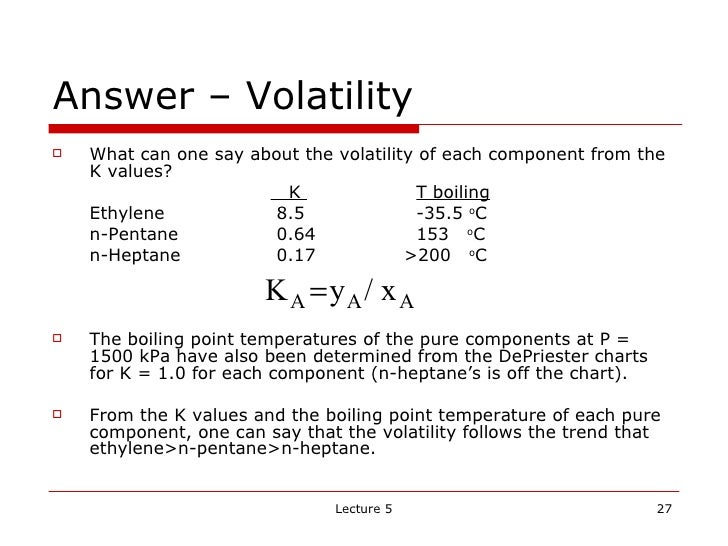

Modified DePriester chart at high temperatures (D.B. Comparisons of results show that the currently published correlations give poor estimates of K-values for all components, while the proposed new model improved significantly the average absolute deviation error for all components. If the feed is already hot and/or the pressure of the flash drum is quite low.

These K-values were then used to build the model using the Discipulus software, a commercial Genetic Programming system, and the results of K-values were compared with the values obtained from published correlations. Material balance techniques were used to extract the K-values of crude oil and gas components from the constant volume depletion and differential liberation tests for the oil and gas samples, respectively. Constant Volume Depletion (CVD) and Differential Liberation (DL) were conducted for these samples. In this paper, 732 high-pressure K-values obtained from PVT analysis of 17 crude oil and gas samples from a number of petroleum reservoirs in Arabian Gulf are used. The new model is applied to multicomponent mixtures. This paper presents a new model for predicting K values with genetic programming (GP). Several techniques are available in the literature to estimate the K-values. In particular, they are critical for reliable and successful compositional reservoir simulation. They are important in predicting compositional changes under varying temperatures and pressures in the reservoirs, surface separators, and production and transportation facilities. Equilibrium ratios play a fundamental role in understanding the phase behavior of hydrocarbon mixtures.


 0 kommentar(er)
0 kommentar(er)
